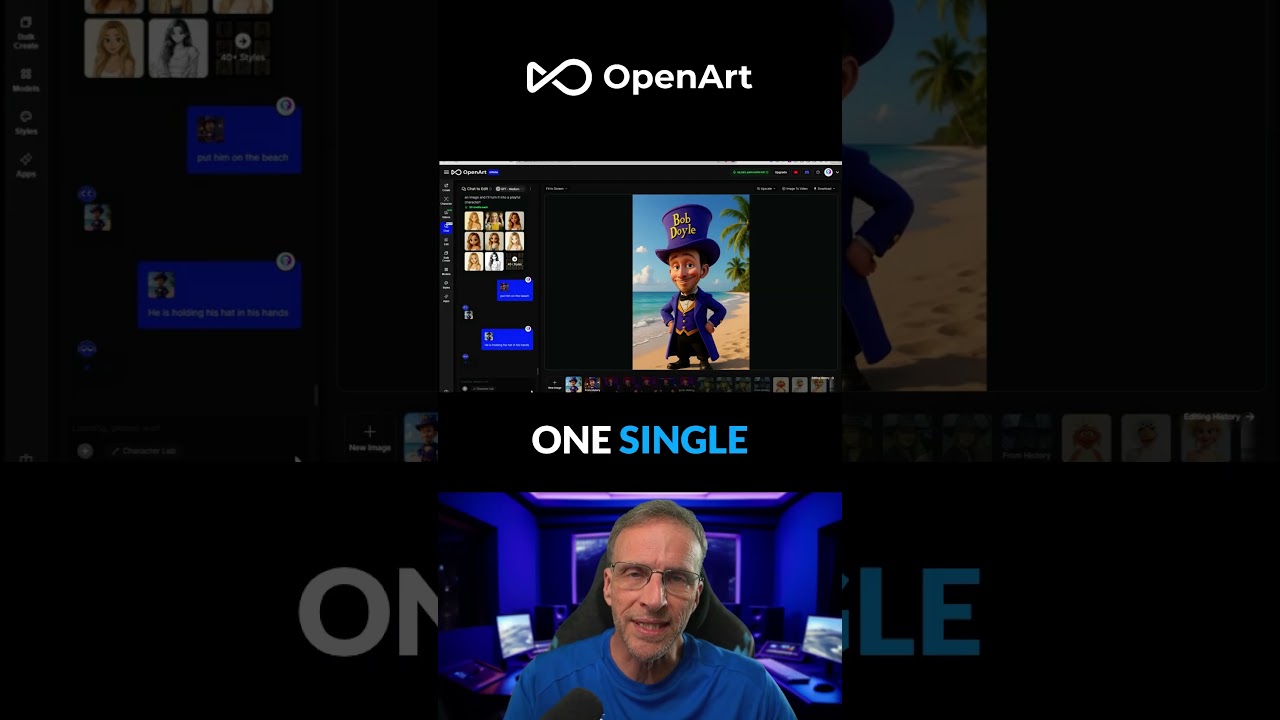The video showcases OpenArt’s AI-powered platform that enables users to easily create detailed images and animations by simply providing prompts or uploading characters, making the process accessible and customizable. It highlights features like scene placement, iterative editing for sequences, and efficient generation of visuals, emphasizing the platform’s versatility for creative projects.
The video introduces OpenArt’s innovative tool that allows users to transform their ideas into stunning images using AI-powered magic. It emphasizes the ease of creating detailed and customized visuals by simply selecting or uploading a character or concept, such as a character named “magic Bob.” Once the character is loaded into the platform, users can easily manipulate and position it within various scenes, making the process accessible even for those without advanced artistic skills.
The presenter demonstrates how to place the character into a specific setting, like a beach, by providing simple textual instructions. The AI interprets these prompts and generates the scene accordingly, showcasing the platform’s ability to turn descriptive ideas into visual representations seamlessly. This process highlights the flexibility and user-friendliness of the tool, making it straightforward to create complex scenes with minimal effort.
Next, the video explores the concept of iterative editing to create animations or sequences. The presenter describes how to generate multiple images that depict different stages of an action, such as a character holding or removing a hat. By creating a start image with the character wearing the hat and a stop image with the hat removed, users can produce simple animations or visual narratives. This method provides precise control over the motion and transition between frames.
The presenter also discusses the possibility of simplifying the process by generating a single image and instructing the AI to depict the character in a different pose or action, like taking off the hat. If the exact positioning of the character’s limbs or accessories isn’t critical, this approach can save time and effort. The focus is on achieving the desired visual outcome efficiently, whether through multiple frames or a single, more flexible prompt.
Finally, the video emphasizes the power and versatility of OpenArt’s platform for creative projects, from static images to animated sequences. It encourages users to subscribe to access these features and hints at the fun and creative possibilities enabled by AI-driven image generation. The overall message is that with this tool, turning ideas into vivid images and animations is simple, intuitive, and highly customizable.
